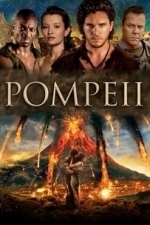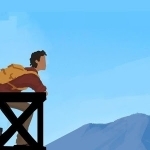
Father and Son
Games
App Watch
Start an exciting and timeless journey between Naples, Pompeii and Ancient Egypt, spanning different...
games
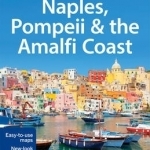
Lonely Planet Naples, Pompeii & the Amalfi Coast
Lonely Planet and Cristian Bonetto
Book
Lonely Planet: The world's leading travel guide publisher Lonely Planet Naples, Pompeii & the Amalfi...

The Rough Guide to Naples and the Amalfi Coast
Book
Make the most of your time on Earth(TM) with The Rough Guide to Naples & the Amalfi Coast. The Rough...

Happyslapped by a Jellyfish: The Words of Karl Pilkington
Book
A collection of hilarious and compelling insights and anecdotes, diary entries, poems, 'true' facts...

The Poison Keeper
Book
Naples 1633 Aqua Tofana – One drop to heal. Three drops to kill. Giulia Tofana longs for...
Historical Fiction Renaissance Italian
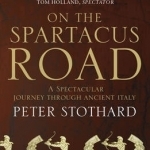
On the Spartacus Road: A Spectacular Journey Through Ancient Italy
Book
In this inspiring and original book, former editor of The Times, Sir Peter Stothard, re-traces the...
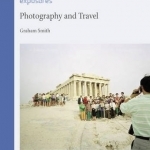
Photography and Travel
Book
Photography and travel have been linked since 1839, when Daguerre and Talbot first made their...

A Loeb Classical Library Reader
Book
This selection of lapidary nuggets drawn from 33 of antiquity's major authors includes poetry,...
ClareR (5991 KP) rated The House with the Golden Door in Books
Dec 13, 2022
But Amara feels a responsibility to free or buy the friends she has left behind.
I loved the world building in this book. And even though she’s supposedly free, she is still constrained by her sex and status. Being a woman doesn’t seem like much fun at any point in history. Whilst Roman women may have had more rights than many others, I struggled to see any advantages. Whilst I live reading about history, I have NO wish to travel back in time. Only men could do that in relative safety, I think. And I’m happy with my antibiotics and my rights, thanks!
So Amara decides to work with her strengths, and continues to sing for money with Victoria and two slaves that she buys with the help of a friend.
It becomes apparent though, that Rufus is becoming bored with Amara, and she starts playing a dangerous game.
I seriously can’t wait until the third part of this trilogy. You just know that there’s going to be a pretty BIG event coming up (Vesuvius, anyone?!), and I’m desperate to know how this all plays out.
Highly recommended.
Movie Metropolis (309 KP) rated Pompeii (2014) in Movies
Jun 11, 2019
However since 2012‘s 2009 release the genre has fallen into a dormant state. Nevertheless, four years later Paul W.S. Anderson attempts to reawaken this box-office behemoth with his take on the tragic true events at Pompeii, but does the film succeed in its task?
Partially is the short answer. Anderson’s first film since 2012’s disaster Resident Evil: Retribution is as cheesy as a Dairylea triangle, but it also has some stunning special effects to give it some life.
Game of Thrones’ Kit Harington stars as Milo, a slave captured by the Romans after they wiped out his entire family. He is taken to a gloriously recreated Pompeii and immediately sets his sights on the very beautiful Lady Cassia, played by a rather dull Emily Browning, who just so happens to be the daughter of the city ruler, Severus. I’m sure you can guess the plot…
What ensues is a cheesy mess of terrible acting and stilted dialogue that jars with the period nature of the film. Only the knowing of what is to come from Mt Vesuvius, which is beautifully rendered in CGI, stops the film from grinding to a halt.
Kiefer Sutherland dons a downright ridiculous English accent for the role of Senator Corvus, the chief antagonist in the film. He is on business in Pompeii to see if trade can be established and investment can be agreed with the great city of Rome – though this plot point gets lost along the way.
Another issue is the true story which Pompeii is based on. The great tale of tragedy and mother nature showing her ruthless side is one we all know – but all we really want to see is the mountain going boom. Unfortunately we must wait whilst Anderson tries his best to make us care about the characters with their sickly back-stories, for which he fails in breathtaking fashion.
Finally after nearly an hour of what feels like a poor-mans Gladiator we are treat to a stunning spectacle, as Mt Vesuvius explodes in rip-roaring style. As the mountain blows and the fireballs rage Anderson once again tries to get us interested in the paper-thin story, thankfully not pushing too hard this time, and he lets the special effects take over.
Historical accuracy is, surprisingly, very good. According to the director, Pompeii was faithfully recreated for the film with aerial shots of the city as it stands today topped up with CGI to show the thriving metropolis we see in the film.
Unfortunately, scientific accuracy takes a back-seat for the sake of high drama, which is the case with many films of this nature. The iconic pyroclastic flow, attributed to killing the majority of Pompeii’s inhabitants due to its huge speed and massive temperatures is slowed right down to ensure the film can last another ten minutes or so – though this is perhaps to be expected.
Overall, Paul W.S. Anderson has created a film which certainly looks the part, but is lacking in so many other areas. Kiefer Sutherland’s villain is completely upstaged by the constant shots of the volcano, which are almost pantomime like in their ‘it’s behind you’ staging, and the rest of the cast are wooden and not particularly likeable.
However, what it lacks in story and acting finesse it makes up in the beautiful special effects and engaging cinematography. It’s worth a watch just to see Pompeii get obliterated – which is probably not a very nice thing to say at all.
https://moviemetropolis.net/2014/05/03/pompeii-3d-review/

